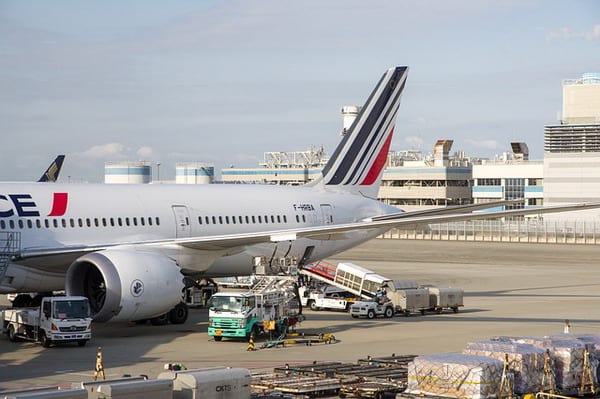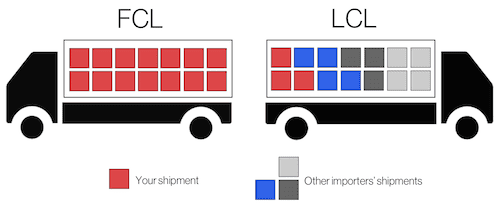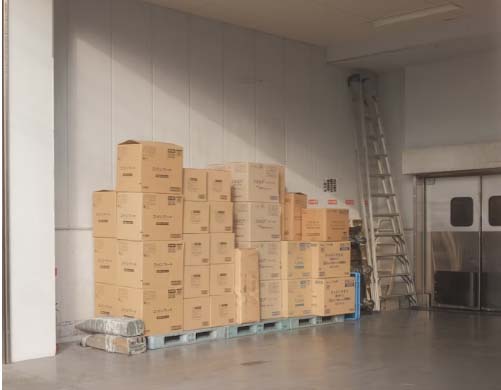In international businesses, freight is a big part of the cost of the order. A proper method of transportation can not only save your cost but also improve the competitiveness in the market. The flashlight, power bank, and other electronic products have small volumes but are heavy. What’s the cheapest and safe way to ship orders? Read this post to find the proper shipping method for your orders.
There are two main types of cargo transportation, air freight, and sea freight. Import goods around the world involve international shipping. There are three main ways to deliver your orders from supplier Express, air freight, and ocean freight. Both Express and air freight transport goods by plane. But Express is a door-to-door service. Air freight is airport-to-airport services. So, they are different methods of transportation.
What’s express?

Express means to send something somewhere very quickly and easily. It’s a door-to-door service. All the shippers need to do is prepare the goods and call the express company to collect the goods. And the consignee can wait for the arrival of the goods at the door. The freight can be paid by either the sender or the consignee, but generally speaking, the consignee needs to pay a higher freight rate than the sender. And some carriers with poor service may add extra fees to you. We suggest that the shipper pays the freight.
The express companies include DHL, UPS, FedEx, TNT, EMS, and USPS. After years of development, these express companies have developed numerous agents. So the services they provide are becoming more and more diversified.
Generally, they mainly provide two services: express transportation and economical transportation. The express rate typically has a higher rate but a shorter time in transit. For example, sending a parcel within 1kg from China to the USA or Europe will cost around 40 to 60 dollars and 4 to 8 days in transit. But to ship the same package same destination via the economical channel will cost 30-40 dollars but 7 to 12 days in transit.
What is air freight?

Air freight is the transfer of cargo via an air carrier. It’s an airport-to-airport service. It means the shipper needs to send the goods to the airport. Except for international air freight costs, the shipper must pay every cost incurred before the airport, including inland freight and airport local fees such as customs charges, documents costs, Fuel surcharge, Security check fees, and more.
The consignee must pay destination charges when the goods arrive at the destination port. The Main includes customs clearance fees and delivery costs from the airport to the consignee’s warehouse. Air freight is more complicated than express, so you may need to hire a freight forwarder to handle customs clearance and inland transportation.
The transport time of air freight is similar to that of express, usually 7 to 12 days. If there are particular circumstances, the time will be a little longer.
What is ocean freight?
Ocean freight is often transporting large loads of goods by sea. Ocean freight is to put cargo in large containers which are loaded onto vessels.

Ocean freight is a port-to-port service. On the most common trading terms FOB, the shipper delivers the shipment to the designated warehouse and pays all the local charges such as inland freight, Customs clearance fee, document fee, handling fee, and more. And the consignee pays all costs in the destination port. Ocean freight includes two terms: FCL and LCL.
FCL is short for full container loading. It means the container is already sealed before reaching the port of departure. The consignee can load one supplier’s goods in one container. But can also load cargo from different suppliers. If so, the precondition is that before the container arrives, the shipper must get all cargo ready at the designated location.

LCL is your cargo less than a container, but still to ship them by sea. So the carrier combine your cargo and other importors’ cargo to fill in one container. If the freight is calculated on the average of each product, the cost of LCL will be higher than FCL.
The transportation time by sea is generally longer, usually about 20- 45 days. But for big volume shipments, its freight will be much cheaper than air freight, especially for full container loading. Over 90% of all the world’s trade is carried by sea.
How to choose the best mode of transportation for my order?
Choosing the proper mode of transportation for your order depends on the volume in weight and CBM.
The following table is from my experience over the years working with different forwarders. It may not be the cheapest, but it can be used as a reference.
| No. | Volume | Best Option | Freight for Reference | Time in Transit | Remarks |
| 1 | Less than 100 kg | By express door-to-door services such as FedEx, DHL, UPS, TNT, USPS, and EMS. | USD 5-.00 USD 8.00/ KG | Around 4-8 days | In this case, express delivery is the best choice. |
| 2 | 100-300 kg | Express freight or air freight | USD3.50- USD 5.00/ KG | Around 7-12 days | There is no big price difference between express or air freight in this case. |
| 3 | 300-500 kg | Air Freight (airport-to-airport service) | USD 3.00 / KG | Around 6-12 days | Air freight is an airport-to-airport service. You need to hire a professional freight forwarder to help clear customs and transport the goods to your warehouse. |
| 4 | Over 500 kgs | Ocean Freight (port-to-port service) | shipper’s Inland freight+port of departure charges +port of destination charges +consignee’s inland freight. | 20-45 days | Big-volume order is suitable for sea shipment. |
Note: The above information is for choosing the proper mode of transportation reference. Oil prices fluctuate in real time and fluctuate the freight rate. Please check with professional freight forwarders for the specific price.



43 Responses
micleosqq ebsfe jkpckrw vpxz btmennqqtfubdqb
943720 834780Hello, Neat post. Theres an issue together with your web site in web explorer, may check this? IE nonetheless could be the marketplace leader and a huge component to folks will omit your excellent writing because of this problem. 768918
314263 162590I adore reading and I conceive this web site got some genuinely utilitarian stuff on it! . 404838
556291 175500Totally composed written content material , thanks for information . 936864
860722 187672I like this weblog so much, saved to fav. 725588
901650 217503Currently really do not stop eating because there is yet the decision that you will transform into. Function from your home us rrs often a fad for that who wants to earn cash however nonetheless enough time requires most substantial occasions making use of children and kids goes for as the modern habit. attract abundance 160286
536851 297000I adore your wordpress web template, wherever would you download it from? 291905